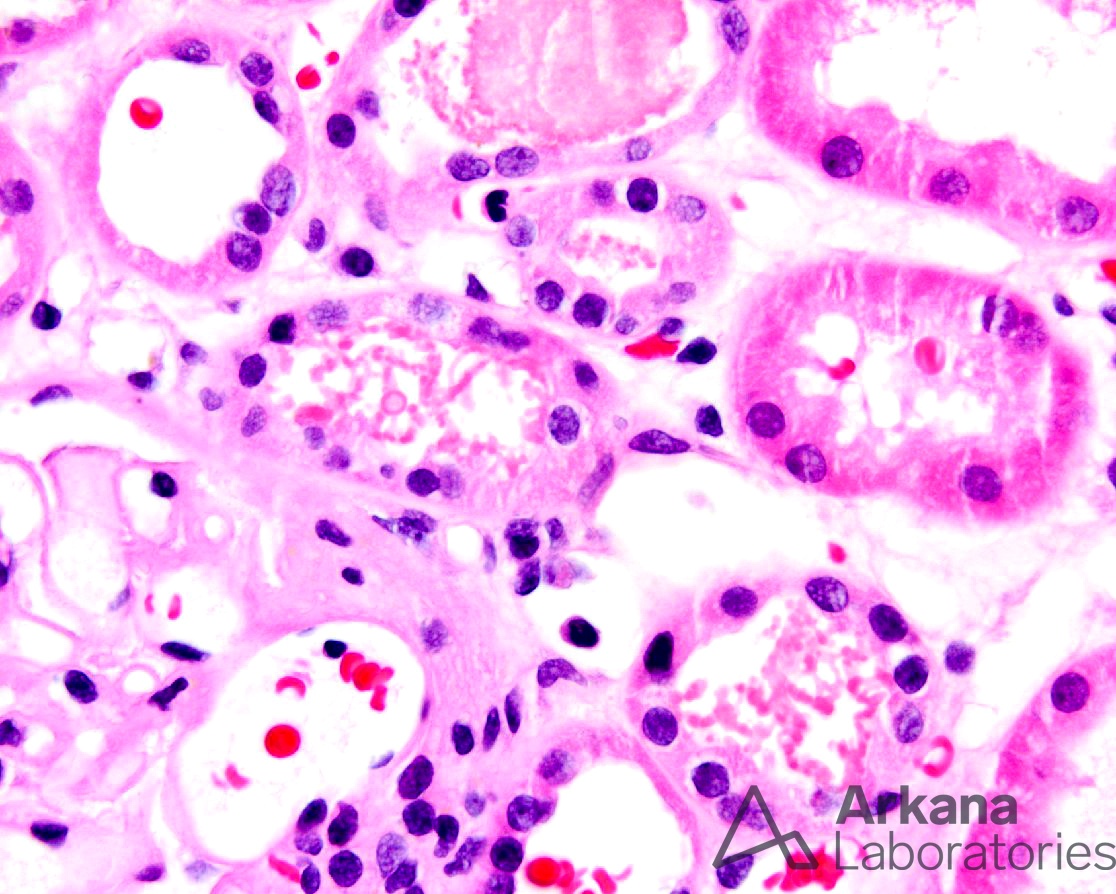What is your diagnosis?
The microscopic image shows an H/E stain at high power of tubules displaying proximal tubular injury with epithelial thinning, reactive nuclear change, and intratubular, eosinophilic pigmented casts with a globular to beaded/ropey appearance. When casts with this morphology are found, the next step is to identify if the nature of the cast, including myoglobin and hemoglobin. In this case, the casts stained strongly for myoglobin, which fit clinically as the patient was suffering from rhabdomyolysis secondary to statin use. Aside from drugs, the clinical differential diagnosis for rhabdomyolysis includes physical trauma (i.e. intense exercise, seizure), toxins (i.e. snake venom), inflammatory myopathies, metabolic myopathies, and other factors contributing to muscle injury (i.e. dehydration, hypo/hyperthermia).
While much rarer, it is important to keep hemoglobin cast nephropathy in the differential as, by morphology, a recent study by Dvanajscak et al. demonstrated that no single morphologic characteristic could readily distinguish hemoglobin from myoglobin casts. Additionally, the identification of hemoglobin casts is important as their presence indicates hemolysis, the differential of which would include infections, paroxysmal nocturnal hemoglobinuria, possible transfusion incompatibility, and drugs (i.e. Rifampin), among others.
Quick note: This post is to be used for informational purposes only and does not constitute medical or health advice. Each person should consult their own doctor with respect to matters referenced. Arkana Laboratories assumes no liability for actions taken in reliance upon the information contained herein.

